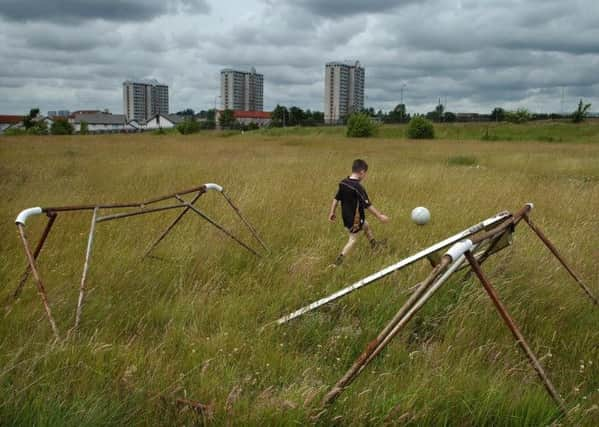Poverty and inequality ‘behind child death rates’


The report from the Royal College of Paediatrics and Child Health (RCPCH) Scotland calls on the Scottish Government to make a series of policy changes to help cut the number of preventable child deaths.
According to the publication - entitled Why Children Die: deaths in infants, children and young people - between 350 and 450 children die in Scotland every year.
Advertisement
Hide AdAdvertisement
Hide AdThe majority of deaths occur in children under the age of one, with the second largest number of deaths being in the 15 to 18 age group.
Further figures show that 131 children and young people in Scotland died due to probable suicide between 2009-12, with suicide rates more than three times higher in the most deprived areas than in the least deprived.
On average, 34 young drivers, aged 17 to 25, were killed each year on Scotland’s roads between 2005 and 2009, accounting for 34% of all fatal crashes involving car drivers over that period.
Directly attributable to smoking in pregnancy every year
The report further found that around 20 infant deaths are directly attributable to smoking in pregnancy every year.
Responding to the findings, the RCPCH’s officer for Scotland, Dr Peter Fowlie, called for three different approaches to help get the number of deaths down.
“Without doubt some of these deaths can be prevented by better healthcare - swifter treatment and doctors being able to spot a seriously sick child early and ensuring they get the right care,” he said.
“For others, there needs to be broader public policies that target the most at-risk groups. So we need to see some practical policies in areas such as improving education for young mothers on the dangers of smoking during pregnancy and raising awareness of the benefits of breastfeeding, because preterm birth and low birth weight are crucial risk factors for premature death during infancy and disproportionally affect the most disadvantaged in society.”
‘The skills to spot a child at risk’
On the issue of reducing suicides and deaths by injury, he added: “We must equip all healthcare professionals with the skills to spot a child at risk of poor mental health at the earliest opportunity, with evidence showing that early identification leads to better health outcomes later in life.
Advertisement
Hide AdAdvertisement
Hide Ad“We must also look to international best practice for policies that have shown to reduce fatalities such as graduated licensing schemes, reduced speed limits and streets that are safe for cyclists.”
RCPCH Scotland praised the Scottish Government for its “commitment” to improving child health through various initiatives and its announcement of a Scottish Child Death Review System.
But it has made a number of recommendations with a view to improving mortality rates.
They include enforcing 20mph speed limits in built up areas and graduated licensing schemes for novice drivers.
To deliver health and wellbeing programmes
The body is also calling on the Scottish Government to introduce a statutory requirement for all schools to deliver health and wellbeing programmes and sex and relationships education.
The Scottish Government said it welcomed any research which can support its work to help prevent young deaths.
A spokeswoman said: “The Royal College of Paediatrics and Child Health was represented on a working group that looked at the issue of preventing child deaths and we continue to value their input.
“Earlier this year we accepted the recommendation to introduce a new system to make a review of every child’s death standard practice across Scotland. The implementation of these reviews will ensure that the circumstances of preventable childhood deaths are thoroughly examined and any lessons for government, health boards, schools or other organisations can be learned.”
Addressing many of the recommendations in the report
Advertisement
Hide AdAdvertisement
Hide AdShe said the Government was already addressing many of the recommendations in the report.
“For example it has introduced an additional health review at 27-30 months and is funding additional health visitor posts to identify child health and development issues in the early years.
“In March we also committed to reducing the proportion of children in Scotland exposed to second-hand smoke in the home from 12% to six per cent by 2020. Similarly our support of the introduction of a graduated driver licensing scheme in Scotland is well-documented and we continue to call on the UK government to either devolve responsibility over this matter to the Scottish Parliament or take UK-wide action.”
The RCPCH has more than 15,000 members in the UK and abroad.
SEE ALSO: